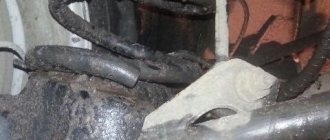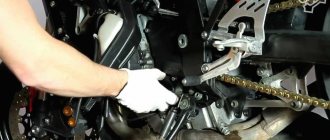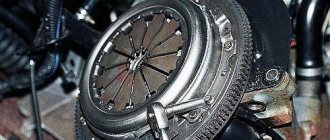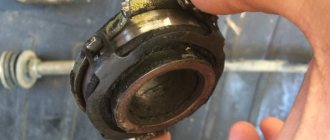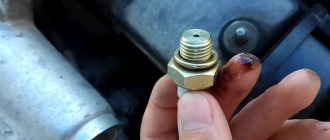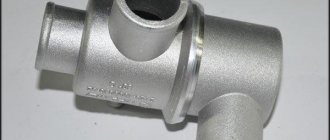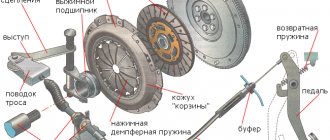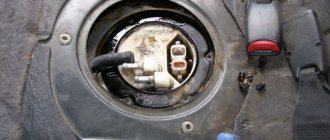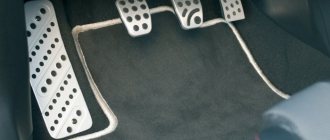Noises and extraneous knocks are standard signs of a clutch problem, which can occur in a variety of situations. Also, in this case, incomplete activation or disengagement, sticking of the pedal, and slipping occur. If any of the listed problems exist, then you need to check the clutch. How to do it? This is what we will talk about in this article.
How to check the clutch?
There are several verification methods. The main one is based on the use of measuring equipment, which you most likely do not have. We are talking about a special measuring gauge. The advantage of this method is that the clutch discs do not require dismantling - you just need to lift the car on a lift.
Such a check will take a lot of time, but the method will allow you to get an accurate result. This method of verification is used at service stations. How else can you check the clutch on a car? There are other alternative methods that do not require equipment.
Slip check
This check is carried out if there are prerequisites for improper clutch operation. But depending on the nature of the breakdown, the method may differ. The most common situation is clutch slipping. In this case, its correct operation is checked as follows:
- We put the car on the handbrake.
- Let's start the engine.
- We activate third gear (fourth is possible).
- Depress the clutch and press the gas pedal.
If the engine stalls, then most likely the clutch disc is worn out and requires replacement. However, such a result is not always accurate.
Let's sum it up
As you can see, the Gazelle clutch (Business, Classic, etc.) must be of high quality and reliable, while providing a sufficient level of comfort when operating the vehicle.
Finally, we note that it is also important to purchase only original products from well-known manufacturers, since cheap kits or counterfeits of the original are characterized by poor quality of work and a short service life, especially on loaded machines like the Gazelle.
To reduce the risk of purchasing counterfeits, you need to pay attention not to the packaging, but to the presence of holograms and markings on the parts themselves, and also purchase clutch kits only from trusted suppliers.
GAZelle gearbox oil: when to change, choosing gear oil in a GAZelle gearbox, changing the oil in a GAZelle gearbox. Useful tips and tricks.
Manual transmission on a GAZelle car: device, main faults and signs of problems. Gazelle gearbox repair, tips and recommendations.
Installing a Japanese engine and automatic transmission on a GAZelle: what to look for when replacing units. Engine power, automatic or manual transmission, tips.
GAZelle Next with a diesel engine: characteristics, strengths and weaknesses of the Cummins diesel engine. Upgraded 150-horsepower diesel engine for GAZelle Next.
Automatic transmission on the domestic GAZelle Next car: features of automatic transmission, advantages and disadvantages of automatic transmission.
Advantages of installing a diesel power unit instead of gasoline or LPG. Choosing a suitable diesel engine for GAZelle and UAZ (UAZ) to replace a gasoline engine.
Removing, checking the condition and installing clutch components
Dust generated during the operation of the clutch and accumulating on the surface of its components may contain asbestos that is harmful to health. NEVER blow dust off clutch components with compressed air or inhale it. DO NOT use petroleum-based solvents or gasoline to remove dust. To wash off the dust into a prepared container, you should use compounds designed for cleaning brake mechanisms. After cleaning and wiping the clutch components, drain off the used cleaner and place the dirty rags in a properly marked container.
Checking slippage
How else can I check the clutch disc? The second method does not involve the use of any special techniques. When driving in city mode, the driver simply needs to carefully monitor the behavior of the car. For example, if the car goes up very hard, there is a burning smell or a drop in speed for no apparent reason, then slipping occurs. In this case, you can try to replace the clutch disc, however, in this case, other elements of the system may be the culprits for this behavior of the vehicle, and the clutch may turn out to be serviceable. So additional diagnostics will be required.
When the clutch "leads"
When the clutch “leads”, unpleasant sounds appear from the gearbox, and it becomes more difficult to engage gears. In this case, there is a way to check the clutch:
- Turn on the engine and set the gear to neutral.
- Depress the clutch pedal.
- Turn on first speed.
If you have to exert force when activating the gear and there are strange sounds coming from the box, then this primarily indicates that the flywheel disc is not disengaging. Most often, this problem is solved by bleeding the hydraulics and adjusting the pedal.
Procedure for removing the mechanism
It is easiest to repair or replace the clutch basket when the entire engine is overhauled. If the power unit is removed, then you can inspect, repair or replace worn parts of this part of the car without much effort. In this case, dismantling the unit does not present any difficulties.
Let's take a closer look at how to disassemble the clutch and how to remove the failed part. The operation scheme is simple. The main thing is to comply with the technological regulations given below:
- First you need to remove the gearbox (gearbox). If the gearbox does not need to be repaired, then there is no need to disconnect the drives before removing the battery and mass flow sensor and draining the oil.
- Unscrew the drive (cable) that activates the mechanism and remove it.
- Unscrew and remove the starter.
- Unscrew the top bolts securing the box.
- Unscrew all electrical wiring harnesses and the speed sensor chip.
- Loosen the drive nut on the right side and completely unscrew the nut on the left side.
- Unscrew the suspension arm.
- Unscrew the ball joint.
- Remove engine protection.
- Remove the reverse signal switch chip.
- Unscrew the torque rod from the gearbox and remove the lower cover of the clutch housing.
- Loosen the nut of the gearbox control drive clamp and remove the rocker.
- Unscrew the lower bolts and gearbox mounting nut.
- Jack up the engine.
- Unscrew the gearbox from the pillow.
- Remove the box and gain access to the necessary component of the car.
Checking disc wear
Let us remind you that the clutch disc necessarily has its own resource. Many car owners forget about it and change it only when driving the car becomes uncomfortable. In urban driving mode, this resource decreases quickly, and if the car has “ran” about 70-80 thousand kilometers in the city, then the clutch disc is simply bound to “fail”. However, when driving on highways, the car can travel more than 300 thousand kilometers without replacing the clutch disc.
The easiest way to determine the degree of wear on the clutch disc is by using the pedal stroke. To do this you need:
- Place the machine on a level surface.
- Start the engine and warm up to operating temperature.
- Engage first gear and slowly release the clutch. In this case, the engine must not be allowed to stall. Please note at what point the transmission of torque to the wheels begins. If vibration appears on the car body, stop checking.
If the clutch begins to engage at the very beginning of the pedal stroke, then this indicates that everything is in order with the disc and its degree of wear is either low or absent at all (the disc is new). If the clutch occurs in the middle of the pedal stroke, this may indicate disc wear, but not always. Some machines may have a similar pedal adjustment, in which the disc engages in the middle of the pedal stroke.
If the clutch occurs at the very end of the pedal stroke or if slipping occurs at all, this indicates a worn disk that requires replacement. If there is a burning smell, the clutch disc must be changed urgently, otherwise there is a risk of damage to the flywheel.
Basket installation
To repair or replace the clutch basket, you need to unscrew the bolts holding it. If you can see that the basket petals are very worn, it is best to replace the entire part.
To install a new basket, it is necessary to straighten or center the gearbox input shaft, since otherwise the displacement of the disk will not allow the box to be put on. Therefore, the operation of inserting the disk with the mandrel into the flywheel must be performed very carefully.
After putting the basket in place, you need to tighten the clutch bolts. In this case, the bolts are tightened gradually, over 3 or 4 turns of the flywheel.
The final step in replacing the basket is to install the release bearing on a well-lubricated shaft.
The specific technology for removing the clutch basket and replacing it depends on the type of engine and type of clutch mechanism, but for most cars it is similar to that described above.
Checking the release bearing
It's not enough to just know how to test your clutch. You also need to be able to check the release bearing, since this element plays an important role in the transmission system. Often its failure is confused with the failure of the entire clutch system.
The check is carried out with the clutch pedal depressed, since it is in this position that torque is transmitted to the bearing. It moves away and pulls the clutch disc behind it. Therefore, it is not recommended to hold the clutch pedal down for too long, as this puts unstable loads on this part and leads to its rapid wear.
A clear sign of bearing wear is sounds when the clutch pedal is pressed (knocking, rustling). However, if such sounds appear in cold weather, then there is no need to worry. This part has a low expansion coefficient at low temperatures due to the high strength of the steel. And the glass itself, where the entire assembly is located, has a high expansion coefficient. Therefore, when heated, the sound should disappear.
In addition, there are other signs that indicate a clutch malfunction: incorrect gear shifting, the inability to engage some gears at all. It is also worth paying attention to the jerking of the car when driving at speeds.
The most common causes of clutch system failure
The human factor can lead to premature failure of a given unit. Here are several factors that affect clutch life reduction:
- Aggressive driving style. You should not constantly press and release the clutch pedal sharply - this will cause the friction linings to quickly fail.
- Driving under increased loads.
- Incorrect towing. Inexperienced car owners often keep the pedal half-pressed when towing. It is also not recommended to tow vehicles much heavier than your car.
- Driving with the clutch pedal half depressed.
- Sharp starts and too smooth at high speeds.
- Many beginners often keep the clutch depressed during short stops (for example, at a traffic light). This should not be done, since in this position the release bearing is under constant load, and this leads to its premature failure.
The working life of the coupling is quite long and ranges from 100 to 150 thousand km. When used correctly, the mechanism is quite reliable and reaching the top level is quite possible.
How to check clutch cylinders?
If the cylinders are faulty, the car may either not respond to the clutch pedal at all or respond incorrectly. Often, car owners whose main or auxiliary cylinder does not work complain that the car starts moving even when the clutch pedal is pressed. This primarily indicates a faulty cylinder. Checking them is quite simple: considering that there is nothing special to break there, you only need to check if there are any fluid leaks in the cabin (immediately above the clutch pedal and under the hood). If there are no leaks, then most likely everything is fine with the cylinders.
Characteristic
The clutch system is a separate design that allows the drive shaft of the motor to be disconnected from the mechanical drive to the drive wheels for a short period of time. This is done to switch to a higher or lower transmission gear. Also, with the help of the clutch, they achieve smoothness when turning on and off the load on the internal combustion engine. This helps prevent damage to the crankshaft of the power unit.
For all vehicles with a manual transmission, the clutch device is standard. So, it consists of a flywheel, a driven disk, a “basket” and a release bearing.
